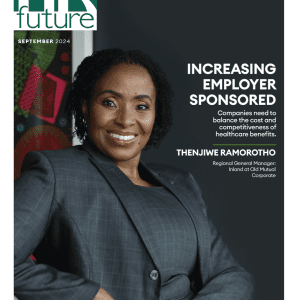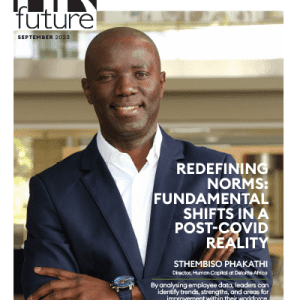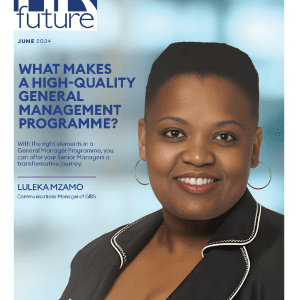Think people not process, think capabilities not role.
More and more, a person-centric approach is becoming the main focus to talent management. This involves getting to know talent at a deep level, including hopes, ambitions and capabilities, and looking at the whole person when considering people for roles – it puts “purpose” right at the heart of talent management.
More and more, talent intimacy is seen as a vital part of talent development. Organisations recognise the importance of getting to know their people deeply, understanding what motivates them and what will help them to achieve their ambitions. Senior leaders are identified as critical to this shift. At one company, the notion is, “We can’t grow the talent unless we know the talent”.
Some organisations have begun to look beyond using the nine-box grid to identify talent, as they felt too long was spent on slotting people into a position and giving too much weight to those in the “top right” box. Instead they have adopted a more people-centric approach, asking questions such as:
• What are your main business challenges for next year?
• What would the profile of your people need to be to drive success against these challenges?
• Would you accept these profiles as a categorisation of the types of potential you need?
• Looking at each person in the team, what type of potential would they have?
• Does your mix of people fit with what you need to address challenges? and
• What does each person in the team want to do? Does their aspiration fit with our view of their potential?
This approach drives a conversation that focuses on finding a match between what the person is good at and wants to do, and what the business needs to deliver its ambitions, rather than a typical talent review that steps through each template needing completion. Greater focus is given on how to support the individual, rather than calibration. And, for the conversation to be comprehensive, a deep understanding of the individual is key.
Managing succession is the cornerstone to strategic viability and business continuity, but many organisations are finding succession planning is not delivering the results it should. This is partly due to the quality of dialogue between the business and employees as there are no comprehensive career discussions. But the best organisations do have career conversations with their employees to understand their career aspirations and determine which development paths will help them achieve those. Unless succession management takes a “whole person” approach, organisations run the risk of investing in people who don’t have the motivation to advance into those mission-critical roles.
Some organisations use the terminology “casting” and consider “what is the right casting” for a particular role, which helps determine the fit, readiness and match with an individual’s purpose. It may be that the individual is ready, but they are not the right profile – the right “cast member” – as they need different skills for the role. In this case, the company would cast a different individual.
So, many organisations are simplifying their definition of potential to a single measure of learning agility, which offers greater flexibility within an ever-changing external environment and is the key factor to determining an individual’s ability to adjust to circumstances. Added to this, an emerging trend is the wellbeing of the employee as part of the notion of “whole person”. This definition of well-being extends beyond the physical to psychological – and in a sense that employers’ accountability extends beyond pay and ratios.
Think capability not role
We can’t say for sure what our organisation strategy will be in five years’ time or what the market will do. And we are certainly not able to say exactly what the organisation structure will look like. Yet many of us still develop detailed job-by-job replacement plans, with three-to five-year windows to quite a deep level in the organisation.
Risk does need to be managed at the top of the organisation and that need hasn’t changed but, for the rest of the business, it seems like the market is saying it is time to find a new way to future-proof the organisation – to think in terms of capabilities needed, not jobs to be filled; to think of ‘pools’ of talent and not one-to-one replacement, and to think ‘future’ rather than what we need for now.
The first shift we are seeing is the way organisations are handling succession planning in a move towards capability-based analysis rather than job-based analysis. The belief is that a capability-based approach is more agile and more likely to help secure the future of the organisation.
We see boards ask different questions, such as, “How can we be sure we have enough people with the capabilities we need to meet our future challenges?”; “Are we focusing on building and developing the right capabilities?”; “Do we know if our people have the same level of capability in critical areas as our competitors?” None of these can be answered via traditional succession planning, focused as it is on current roles within an existing organisation structure.
Looking at the strength of the organisation through the lens of capability rather than job role appears to be the answer for many organisations taking a more disruptive route. A forecast based on the capabilities an organisation might need for the future and an analysis of mastery over those capabilities goes a long way to giving an insightful view of the competitive strength of a business. The second shift noticed is a trend towards capabilities being defined in terms of the future need for the sector, not just the organisation. Talent teams are now aligning much more closely with the strategic planning function within their business, so they can gain a more immediate understanding of the competitive landscape. This knowledge of the marketplace and organisations’ strategic response gives clarity of direction to talent experts within these organisations. Where the succession approach is led by future capabilities, we also see capabilities leading the wider talent agenda, for example, with . As one of research participants said: “What does this business need? It needs change management, change ambassadors and digital capability so we are investing in those strategic capabilities. I am over leadership programmes.”
This often means going deeper into the organisation to look for raw talent with the latent capability to be relevant five or more years out, regardless of the roles that might be in place. For some forward-thinking organisations, rather than focusing on preparing specific people for specific leadership roles, they are building leadership capabilities within clusters of their workforce, or talent pools. And for those organisations that are reluctant to ‘go too far down the organisation’ when succession planning, using a combination of succession plans for executive and business-critical roles and succession pools for roles deeper down is seen as a good compromise, enabling better movement of talent across borders and increasing diversity of thinking.
One of the leading global telecommunications organisations is typical of this trend. Anticipating significant changes to their roles in the future, the organisation has shifted the focus of succession management to capabilities and to building talent pools that are strong in key areas such as customer experience and video technologies. Finally, this succession approach helps to get around the pattern of line managers identifying talent in their own image. The more you focus on capabilities that are future-focused and less about roles, the more individual managers need to think outside the familiar patterns to find hidden gems.
Lisete Harris is an Associate Client Partner, and Thandolwethu Mncube is a Senior Consultant at Korn Ferry, www.kornferry.com.














